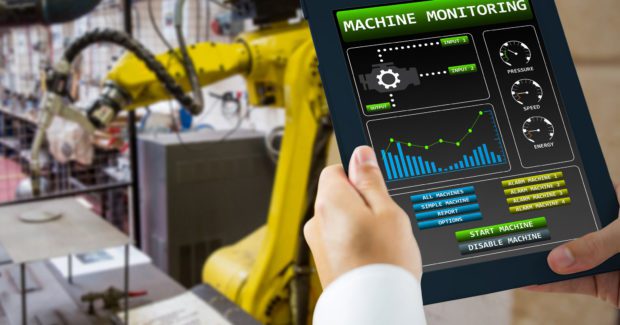Three Major Tipping Points that are Pushing Shops into Industry 4.0
Here are three very big, very real factors that shops must embrace to compete in the fourth industrial revolution.
Posted: September 18, 2017
Science fiction writer Ray Bradbury once said, “Living at risk is jumping off a cliff and building your wings on the way down.” Though this is a truly inspiring thought, I’m not convinced that construction or even cognitive thought would be at the forefront of someone’s mind when faced with a precipice. Sometimes we just need a push to tip us over the edge. The Internet of Things (IoT), also known as Industry 4.0, is still a burgeoning concept. However, rapid socio-economic developments and changes are now causing so many disruptions to business and society that this fourth industrial revolution is beginning to take its first few steps towards the steep drop. Here are the three top tipping points that are pushing shops to embrace the reality of competing in the Industry 4.0 business environment.
DATA
An influx in the use and subsequent abundance of data can be attributed to the advancement of Industry 4.0, and this flood of information calls for all manufacturers to review their systems. The rise in data volumes has led to the coinage of the term “big data,” which is causing a greater need than ever for shops to store and gather information and, in doing so, make better use of it. Companies are now making use of historic data with advanced analytics that enable cognitive machines to self-diagnose and configure. The use of cyber-physical systems to detect issues increases productivity and quality. Shops can also turn to smarter energy consumption by using product lifecycle platforms and cloud computing.
CONNECTIVITY
The age of economic globalization has also been a driving factor in Industry 4.0. Global supply chains are not only becoming increasingly common, they are also accompanied by efficiency issues due to distance and time zones. The Industry 4.0 system for this is to create a virtual global factory: a network of businesses from multiple regions that can resolve issues of connectivity between companies, and also for the relationship between the customer and the supplier. The increasing use of technologies such as remote database access (RDA) and radio frequency identification (RFID) to collate and distribute information supports the concept of IoT as a potential global digital infrastructure.
THE CUSTOMER
The end user’s evolving needs have also energized Industry 4.0 with innovative technology, such as 3D printing that converts a digital design into a physical product. Also known as additive manufacturing systems, this technology is rapidly materializing at an industrial level, which means products can become ultra-customized to the individual, though they are manufactured at a mass production level. The use of a digital system to design and create products creates flexibility for both business-to-business transactions and the end user. The combination of the user’s human input and dynamic data analysis and response may mean that in the future, a digital ecosystem is created whereby human decision is augmented through algorithms.
Now is the time for shops to take the leap into Industry 4.0. When they do, one thing is clear: if they build wings for their leap of faith, they’re going to need a well thought-out plan and a team that is invested in the upgrade.
















